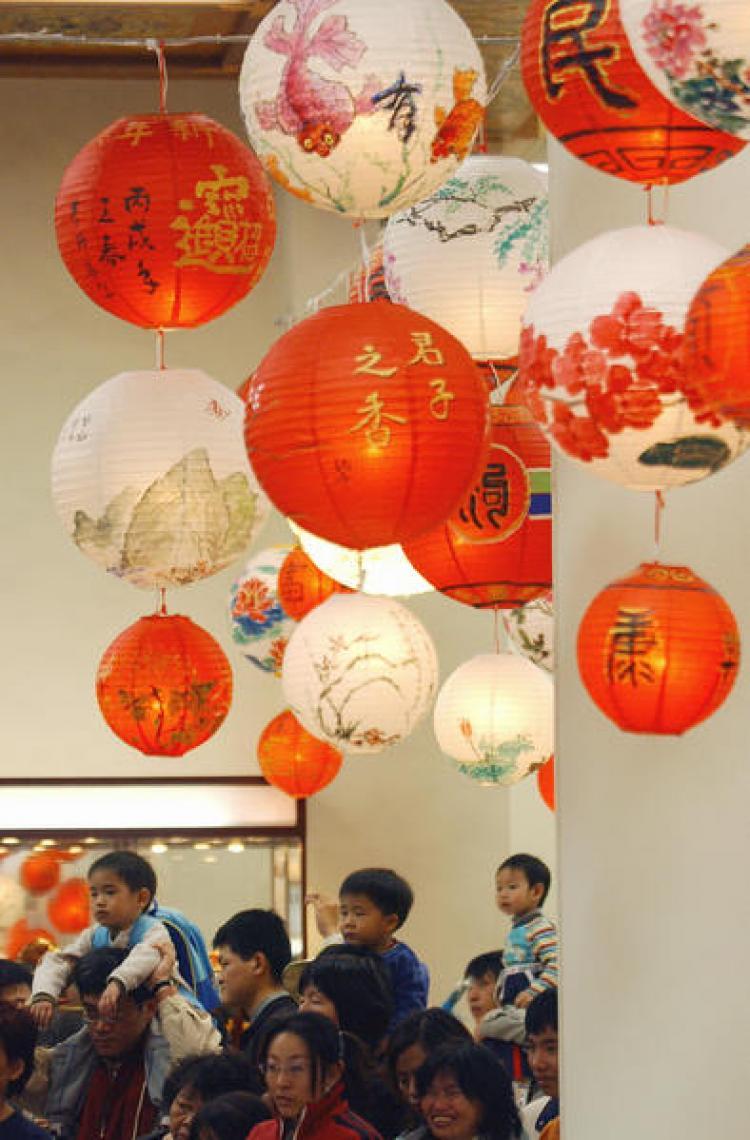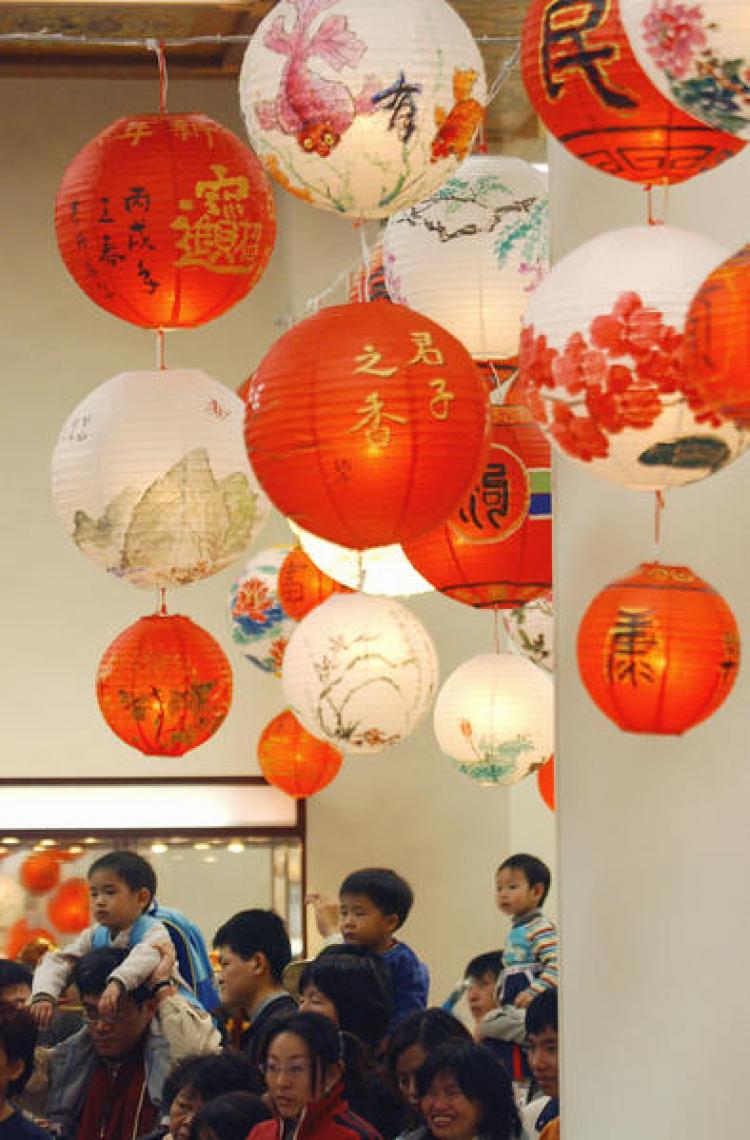“It is a lucky charm!” A Chinese friend exclaimed, presenting me one of those pretty, red Chinese lanterns. I soon learned that Chinese lanterns can also communicate news of birth, death, status in society, and even forthcoming danger.
Dynasties came and went in China. During centuries of peace, the size and position of lanterns in front of a house indicated the social position of its occupants. Valuable silk lanterns hung in front of the houses of the rich, while red lanterns reported joyful events, such as birth or marriage. A blue lantern signaled diminishing energy, telling that there was illness in the family, while the Chinese hung a white lantern in front of the house if someone had died—using white as it is often done in Asia, associated with death—as a sign of grievance for the deceased.
They are still called Kongming-lanterns, after their inventor, allegedly the military strategist and war hero Zhu Ge Liang (181-235 A.D.), called Kongming more familiarly. He was one of the most famous military advisers in Chinese history, and later became prime minister in the Shu Kingdom. During the Three Kingdoms Period he was the one to use lanterns for the very first time—to convey vital information about an urgent military situation.
One time during battle, Kongming discovered that he and his troops in a small city were surrounded. It was impossible to leave, so he was unable to inform his fellow combatants, and could not ask them for help. Kongming asked troops to make large balloons from thin bamboo rods and flimsy paper. They were closed at the top and open at the bottom. At the lower end was a small bamboo construction on which a piece of cloth was affixed. This cloth was soaked with petroleum and then lit. After a short while, the air in the lanterns grew warm, then hot, expanding the paper and eventually sending the lantern into the air. When the cloth was burned up they sank back to the ground again—this is a principle by which balloon travel functions to this day.
With the help of the I Ching, a book of oracle with thousands of years of history in China, Kongming predicted at what time the wind would blow from which direction. Then, at the best time, according to this prediction, he would set loose a volley of lanterns, on which he had also written important information about he and his troops’ encirclement in the city. The flying messengers moved in the direction of his fellow combatants, pitched outside the city walls. They found out the desperate plight of Kongming and his troops, and rushed to the city to rescue them.
When Mao’s Cultural Revolution took hold of China between 1966 and 1976, traditional lanterns, along with many other valuable cultural assets, were despised as symbols of the bourgeoisie and prohibited.
It took two years for the terrible experience and gloom of the Cultural Revolution to pass. The Chinese people, by 1978, had awoken from their lethargy, and, nearly explosively, old festivities among the people took place once again. The end of the Cultural Revolution was being celebrated, and the Lantern Festival had returned. It is celebrated on the 15th day after the Chinese New Year, designated by the lunar calendar. The lantern festival is colorful and the lanterns full of stories; they show the moon goddess or the rabbit, whose seat is said to be on the moon, they portray scenes from the famous novel “Journey to the West”, with small pigs and other animals, and some portray riddles for the viewer, which are supposed to be solved in the midst of all the jubilance.
Even today it is still the custom for some areas in China to let Kongming lanterns rise in the air, especially during the night of the lunar festival. They no longer carry urgent information about a general’s military status, but people still write their wishes on the lanterns, and hope, like Kongming, that they will come true.
Dynasties came and went in China. During centuries of peace, the size and position of lanterns in front of a house indicated the social position of its occupants. Valuable silk lanterns hung in front of the houses of the rich, while red lanterns reported joyful events, such as birth or marriage. A blue lantern signaled diminishing energy, telling that there was illness in the family, while the Chinese hung a white lantern in front of the house if someone had died—using white as it is often done in Asia, associated with death—as a sign of grievance for the deceased.
A Story of Strategy and Invention
They are still called Kongming-lanterns, after their inventor, allegedly the military strategist and war hero Zhu Ge Liang (181-235 A.D.), called Kongming more familiarly. He was one of the most famous military advisers in Chinese history, and later became prime minister in the Shu Kingdom. During the Three Kingdoms Period he was the one to use lanterns for the very first time—to convey vital information about an urgent military situation.
One time during battle, Kongming discovered that he and his troops in a small city were surrounded. It was impossible to leave, so he was unable to inform his fellow combatants, and could not ask them for help. Kongming asked troops to make large balloons from thin bamboo rods and flimsy paper. They were closed at the top and open at the bottom. At the lower end was a small bamboo construction on which a piece of cloth was affixed. This cloth was soaked with petroleum and then lit. After a short while, the air in the lanterns grew warm, then hot, expanding the paper and eventually sending the lantern into the air. When the cloth was burned up they sank back to the ground again—this is a principle by which balloon travel functions to this day.
With the help of the I Ching, a book of oracle with thousands of years of history in China, Kongming predicted at what time the wind would blow from which direction. Then, at the best time, according to this prediction, he would set loose a volley of lanterns, on which he had also written important information about he and his troops’ encirclement in the city. The flying messengers moved in the direction of his fellow combatants, pitched outside the city walls. They found out the desperate plight of Kongming and his troops, and rushed to the city to rescue them.
Signs of Happiness and Hope
When Mao’s Cultural Revolution took hold of China between 1966 and 1976, traditional lanterns, along with many other valuable cultural assets, were despised as symbols of the bourgeoisie and prohibited.
It took two years for the terrible experience and gloom of the Cultural Revolution to pass. The Chinese people, by 1978, had awoken from their lethargy, and, nearly explosively, old festivities among the people took place once again. The end of the Cultural Revolution was being celebrated, and the Lantern Festival had returned. It is celebrated on the 15th day after the Chinese New Year, designated by the lunar calendar. The lantern festival is colorful and the lanterns full of stories; they show the moon goddess or the rabbit, whose seat is said to be on the moon, they portray scenes from the famous novel “Journey to the West”, with small pigs and other animals, and some portray riddles for the viewer, which are supposed to be solved in the midst of all the jubilance.
Even today it is still the custom for some areas in China to let Kongming lanterns rise in the air, especially during the night of the lunar festival. They no longer carry urgent information about a general’s military status, but people still write their wishes on the lanterns, and hope, like Kongming, that they will come true.





